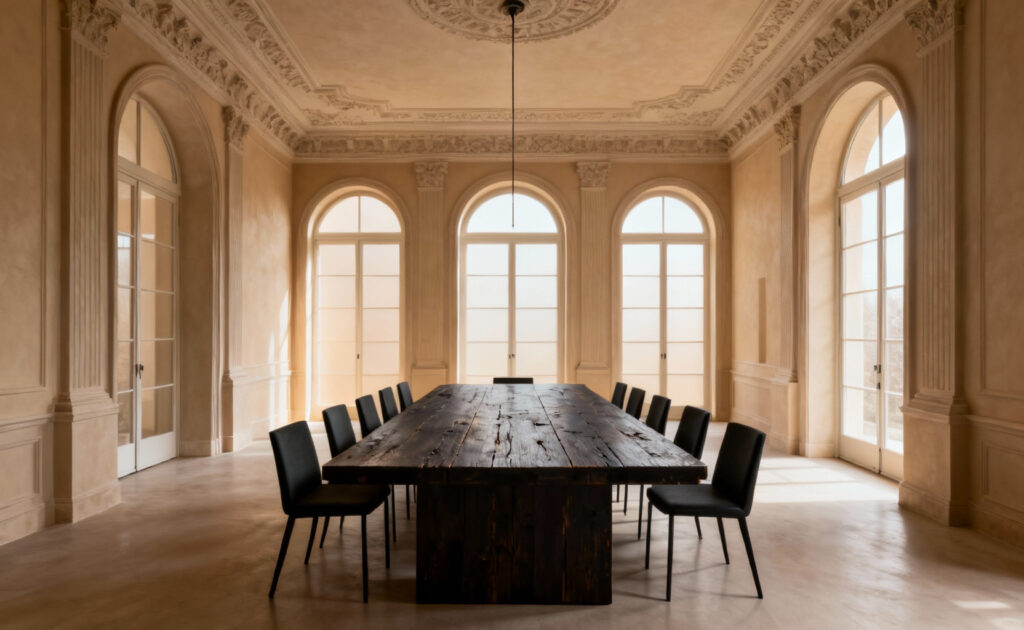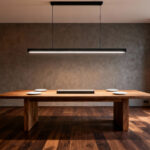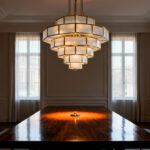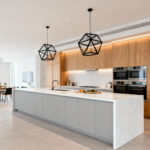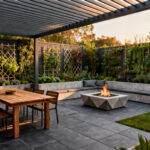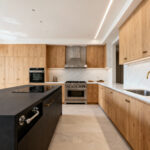The scent of truffle-infused wild mushroom ragu mingled subtly with the faint aroma of aged oak and fresh linen as Julianna adjusted the ceramic plates, each catching the soft glow from the tiered candelabras. At 40, she had perfected the alchemy of transforming a mere meal into an event. Tonight, as guests gathered for her “Harvest Moon Supper,” the balance of her curated space wouldn’t just entertain; it would set the stage for the entire evening.
Too often, we treat the dining room as just a furniture showroom—a table, some chairs, maybe a buffet. But in my experience, true culinary delight extends way beyond the plate. It’s woven into the environment. From the acoustics of the conversation to the way the light hits the wine, every element shapes the dining room aesthetic.
A friend asked me recently how to get this right without it feeling stiff or “museum-like.” So, here is the real story—no corporate speak, just the practical, design-meets-culinary strategies I use to create spaces that work for both Tuesday night pasta and Saturday night dinner parties.
Foundational Concepts: The Semiotics of the Supper Table (Part 1)
The magic of a great dinner party starts before I even open the wine. This section covers the basics—the bones of the room. If you get these wrong, no amount of expensive china will fix the vibe.
1. Harmonizing Architectural Volume with Table Proportions for Inherent Balance
It’s not just about fitting a table into a room; it’s about the flow. I’ve walked into grand dining halls where a tiny table looks like a postage stamp, and cozy nooks where a massive slab of wood makes everyone feel claustrophobic. You need balance. If you have high ceilings, you need a table with some visual weight—maybe a thick pedestal base—so it doesn’t get lost.
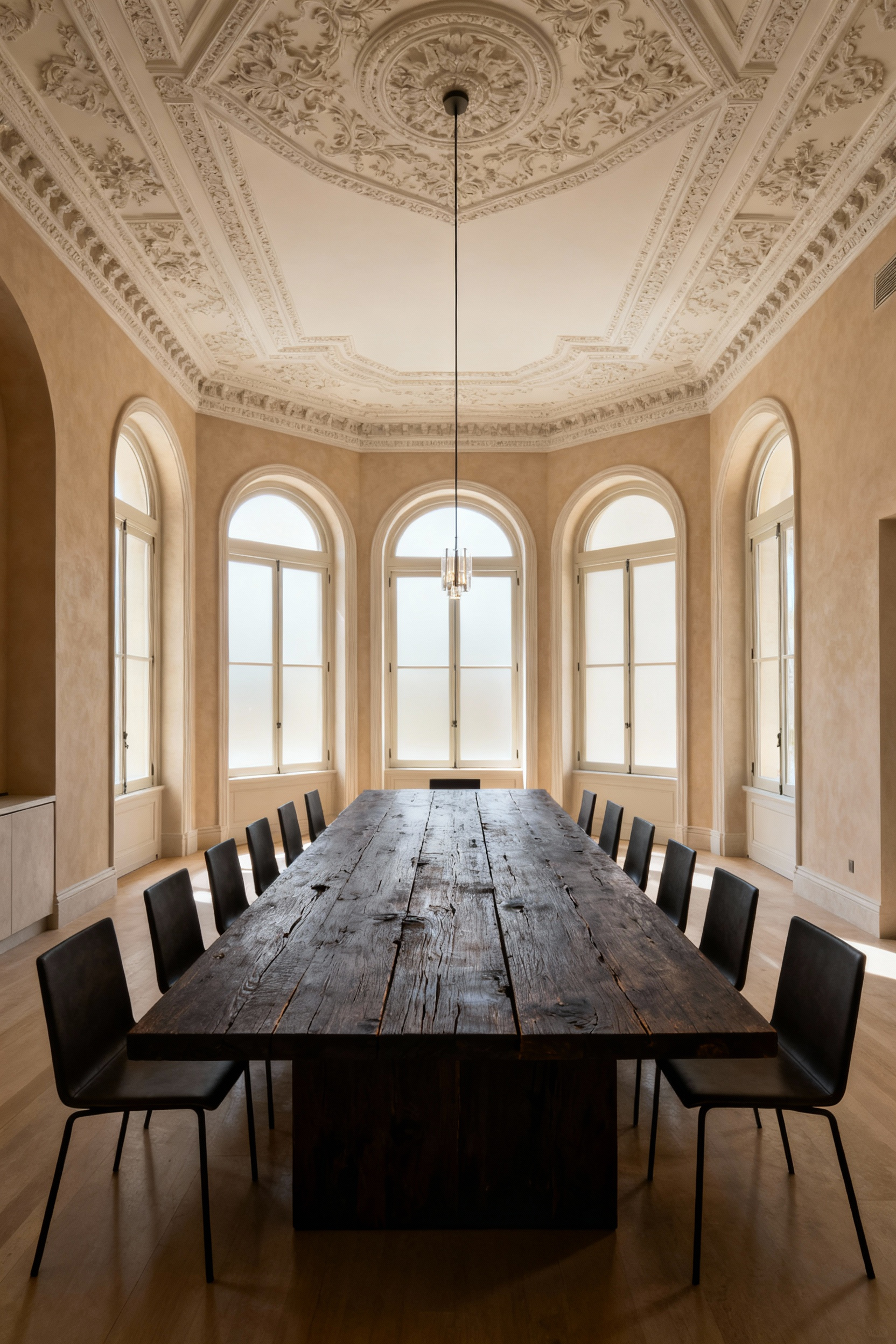
Nancy’s Insight: In my kitchen workflow designs, I always check the “service clearance.” You need at least 36 inches behind a seated guest. There is nothing more stressful than trying to squeeze past someone with a hot platter of roast chicken and feeling like you’re going to trip. If the architectural volume fights the table size, the service suffers.
2. Decoding the Luminous Narrative: Strategic Layering of Illumination Sources for Atmospheric Depth
Lighting is everything. I mean it. A single overhead fixture flattens the room and makes everyone look tired. You want layers. Start with a chandelier that’s about half to two-thirds the width of your table, hung low enough to feel intimate but high enough not to block eye contact (usually 30-36 inches off the table).

Then, add the magic. Sconces on the wall or a lamp on the sideboard create a “glow” rather than a beam. And please, put everything on dimmers. Being able to dim the lights as the sun goes down changes the energy from “bright brunch” to “intimate supper” instantly.
3. The Tactile Palette: Curating Textiles for Sensory Depth and Enduring Comfort
The “soul” of the room is in the fabrics. This is where comfort meets style. Hard chairs and bare windows echo; they make a room feel cold and loud. Adding draperies softens the sound, which actually helps conversation.
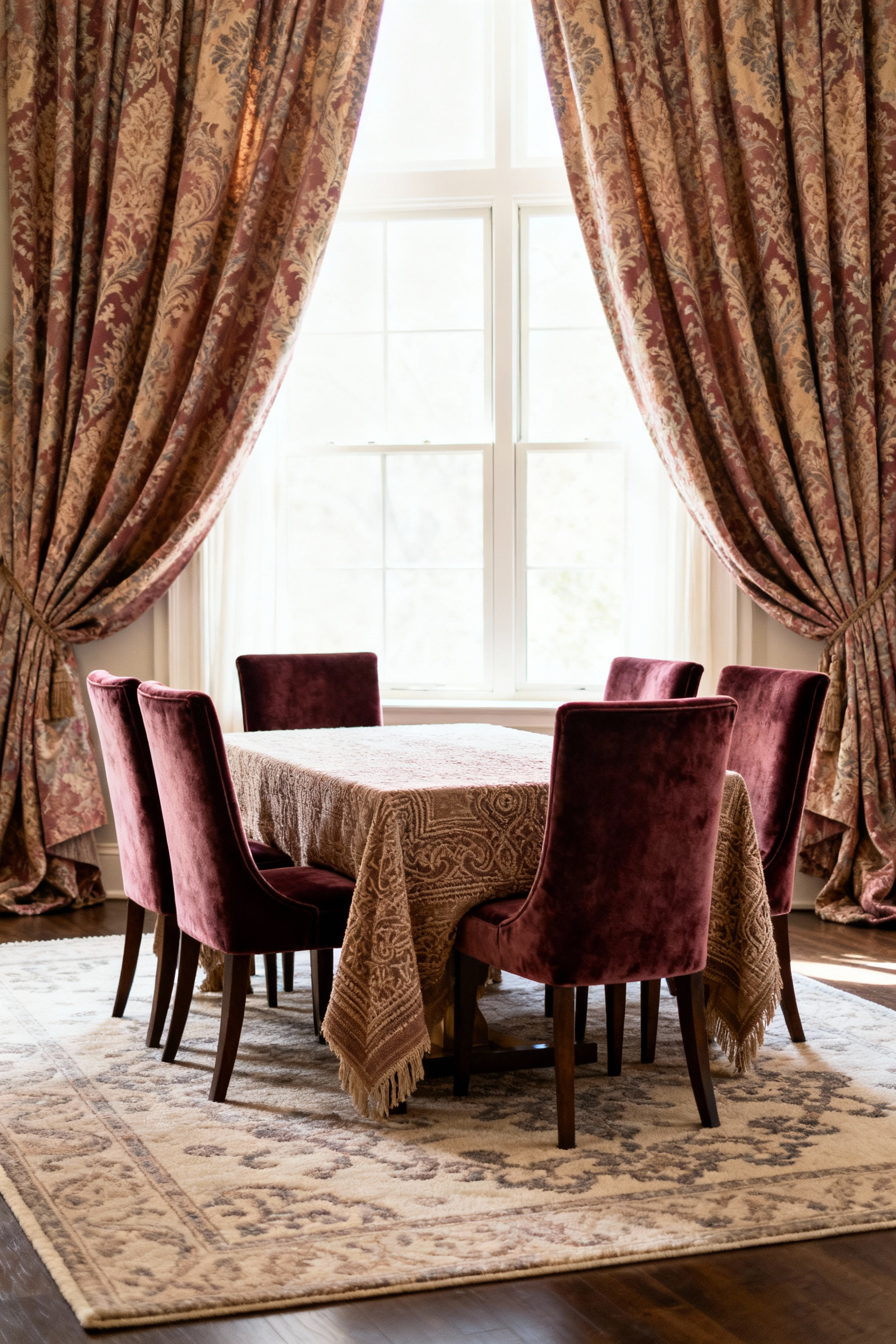
Nancy’s Insight: When I select upholstery for dining chairs, I’m thinking about the inevitable spills. I love the look of velvet, but unless it’s a high-performance fabric, it’s risky for a family. I usually steer clients toward high-quality performance weaves that feel luxurious but can handle a splashed drop of Cabernet without ruining the night.
4. Grounding the Gastronomic Journey: The Intentional Selection of Floor Coverings and Rugs
Floors define the zone. A rug anchors the table and stops the furniture from feeling like it’s floating away. But here is the rule you cannot break: the rug must be big enough.

It needs to extend at least 24 inches on all sides of the table. Why? Because if a guest slides their chair back to stand up and the back legs drop off the rug, it’s annoying and unstable. Hard floors like stone or wood are beautiful, but a wool rug dampens the noise of clattering silverware, making the whole meal feel more refined.
Foundational Concepts: The Semiotics of the Supper Table (Part 2)
Once the bones are right, we look at the visual rhythm. This is about where the eye lands when you aren’t looking at your food.
5. Establishing Visual Cadence: Leveraging Curated Art and Object Displays to Elevate Focus
You want a “visual cadence”—a rhythm that guides the eye. A large piece of art on the main wall acts as an anchor, setting the mood. But don’t just fill space. A gallery wall of small, meaningful prints can be a great conversation starter during that awkward five minutes before dinner is served.
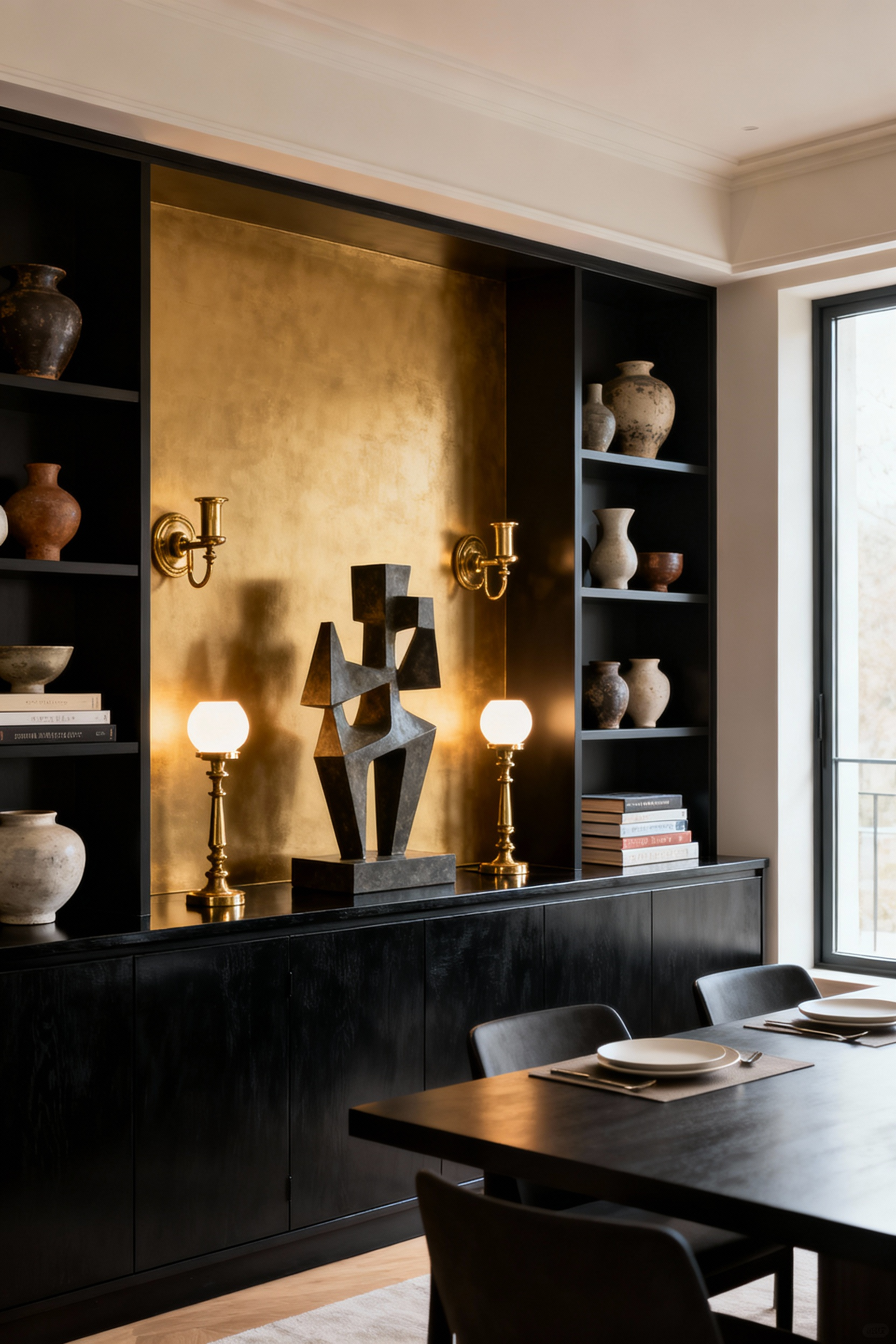
I also love using objects to create texture. A sculptural bowl on the sideboard or a collection of glass decanters catches the light and adds depth. The goal isn’t clutter; it’s curiosity. You want guests to look around and see things that interest them, but not so many things that they feel overwhelmed.
Advanced Applications: Orchestrating Experiential Narratives (Part 1)
Now we move beyond the visual. This is the “sensory symphony” part of the dining room aesthetic. This is what separates a pretty room from an unforgettable experience.
6. The Art of Olfactory Engagement: Subtleties of Scentscaping to Evoke Mood and Memory
Scent is powerful, but in a dining room, it’s tricky. You have to be careful not to compete with the food. I’ve been to dinners where a heavy floral candle completely overpowered the delicate aroma of the fish course. It’s a disaster.
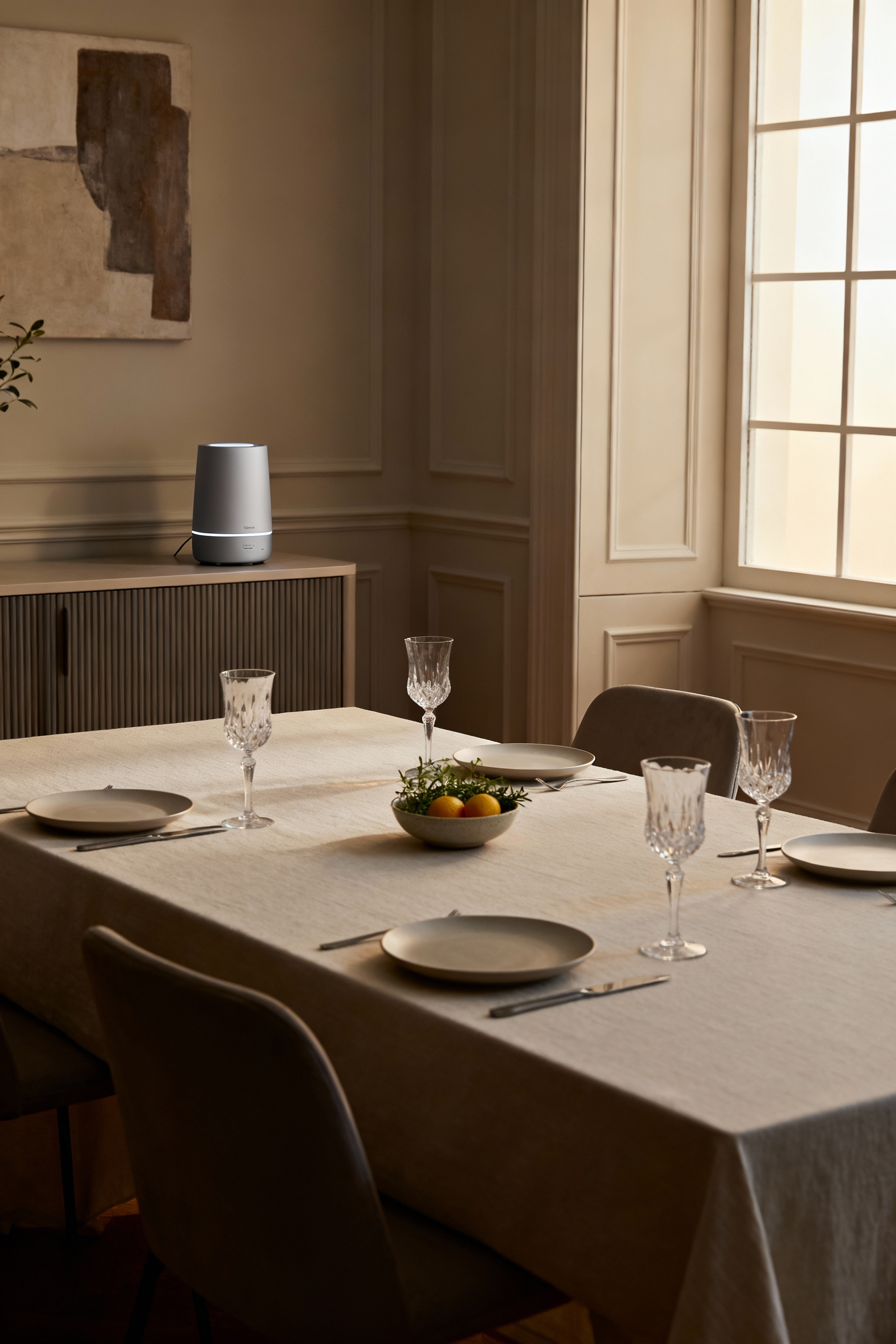
Nancy’s Insight: My rule of thumb? Use “scentscaping” before the food comes out. Diffuse something fresh like bergamot or cedarwood to set the mood when guests arrive. But the minute the meal is served, extinguish the candles or turn off the diffuser. Let the garlic, rosemary, and wine be the stars of the show.
7. Crafting an Auditory Ambiance: From Incidental Sounds to Curated Playlists for Background Resonance
Silence in a dining room can feel heavy. It makes every clink of a fork sound like a cymbal crash. You need a “sonic blanket.” A curated playlist is essential—jazz for brunch, maybe some instrumental bossa nova for dinner.
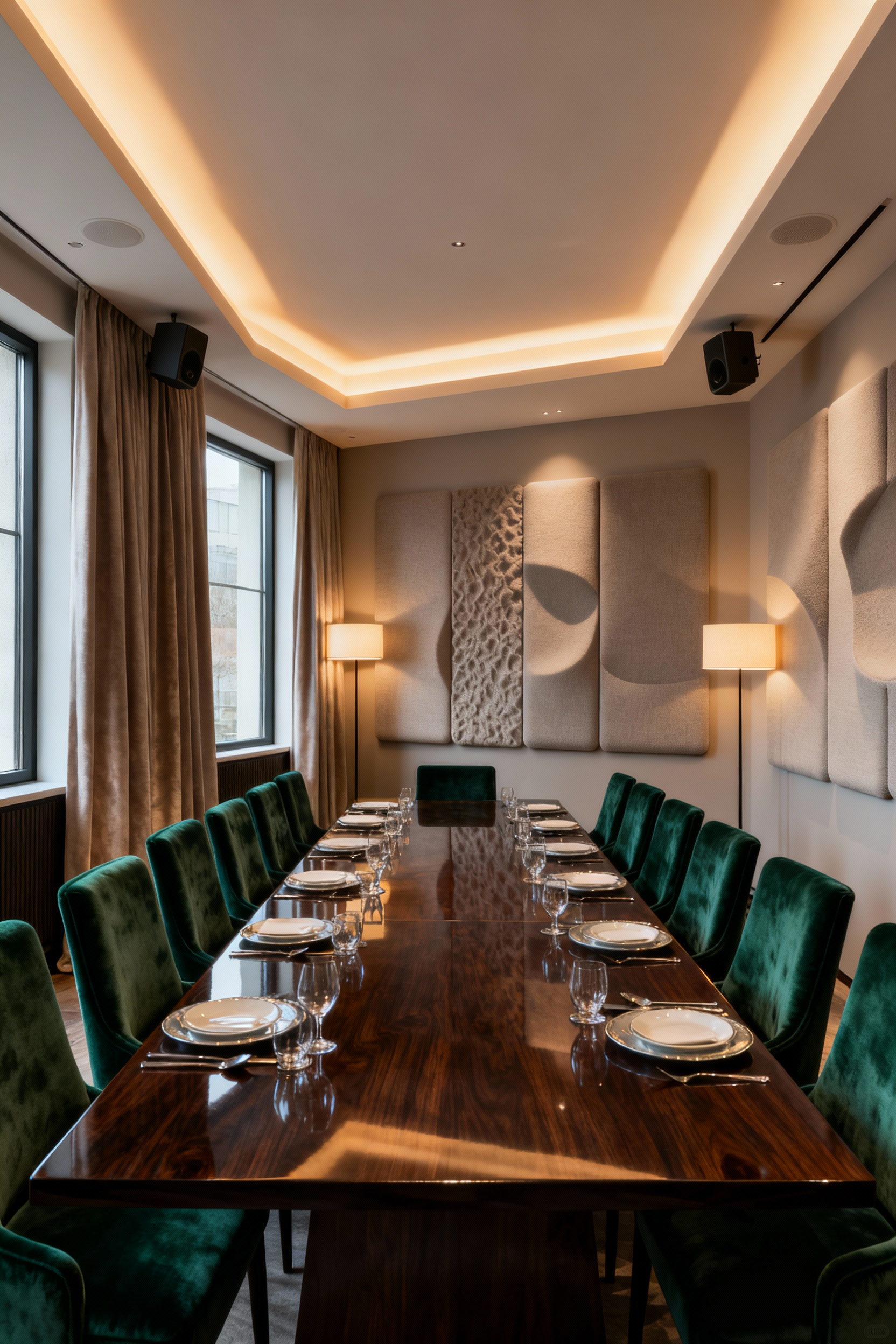
It shouldn’t be loud; it should be felt more than heard. And don’t forget the acoustics. If your room is all hard surfaces (glass table, tile floor), it’s going to sound like a cafeteria. Rugs and drapes absorb that harshness, keeping the conversation warm and audible.
8. Incorporating Biophilic Design: Integrating Nature’s Verdant Harmony for Vitality and Calm
We crave nature. Bringing “biophilic” elements—plants, wood, stone—into the dining room makes it feel alive. It doesn’t have to be a jungle. A large fiddle-leaf fig in the corner or a simple wooden bowl on the table grounds the space.
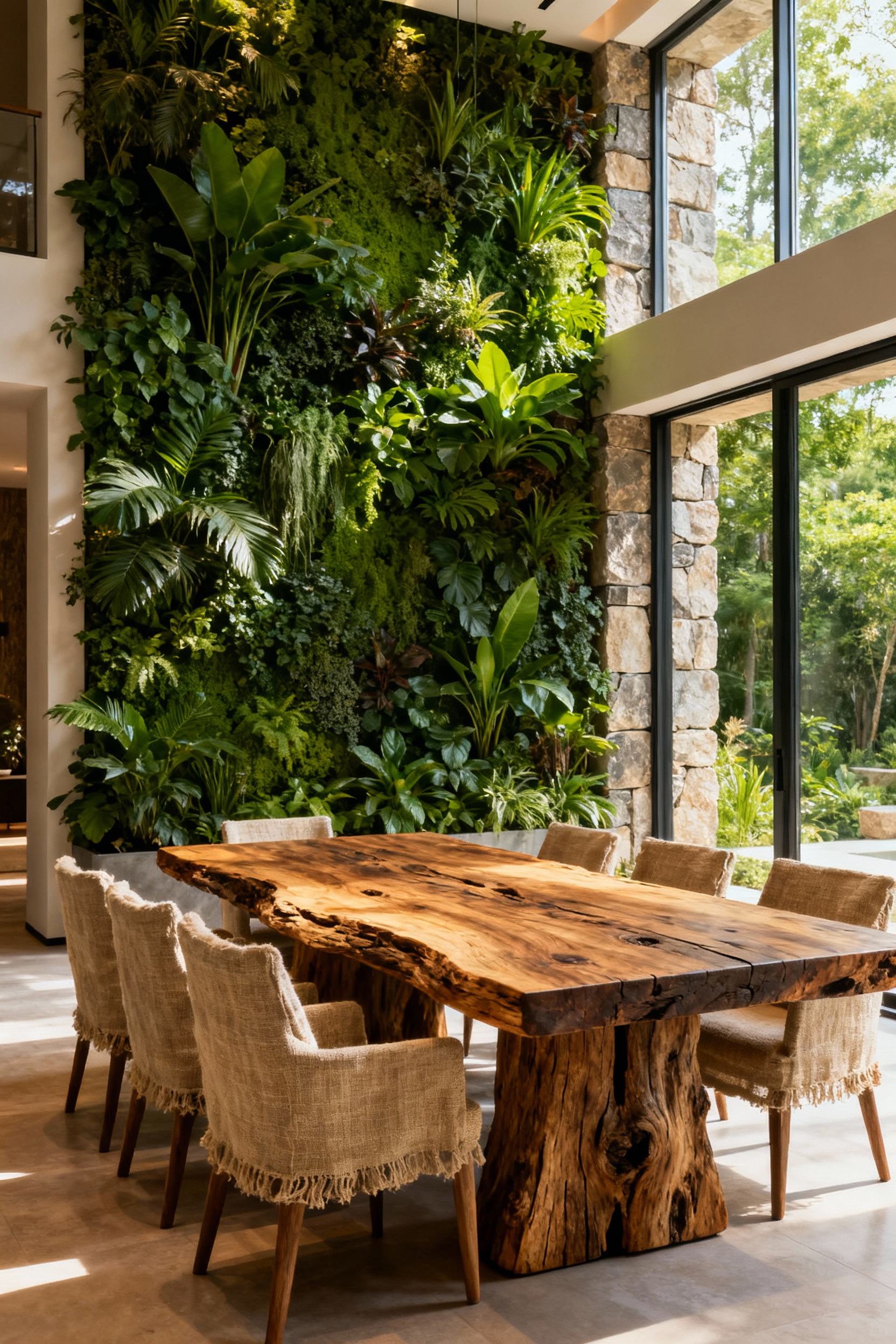
Nancy’s Insight: I love using fresh herbs as part of the decor. A small pot of basil or rosemary on the table isn’t just pretty; it smells edible and appetizing. It connects the design directly to the culinary experience, bridging the gap between the room and the plate.
9. Mastering the Conversational Flow: Strategic Seating Configurations for Enhanced Interaction
The shape of your table dictates the conversation. Round tables are fantastic for smaller groups because everyone can see everyone else—there is no “head of the table” hierarchy. Rectangular tables are great for larger parties, but they can fragment the group into side conversations.
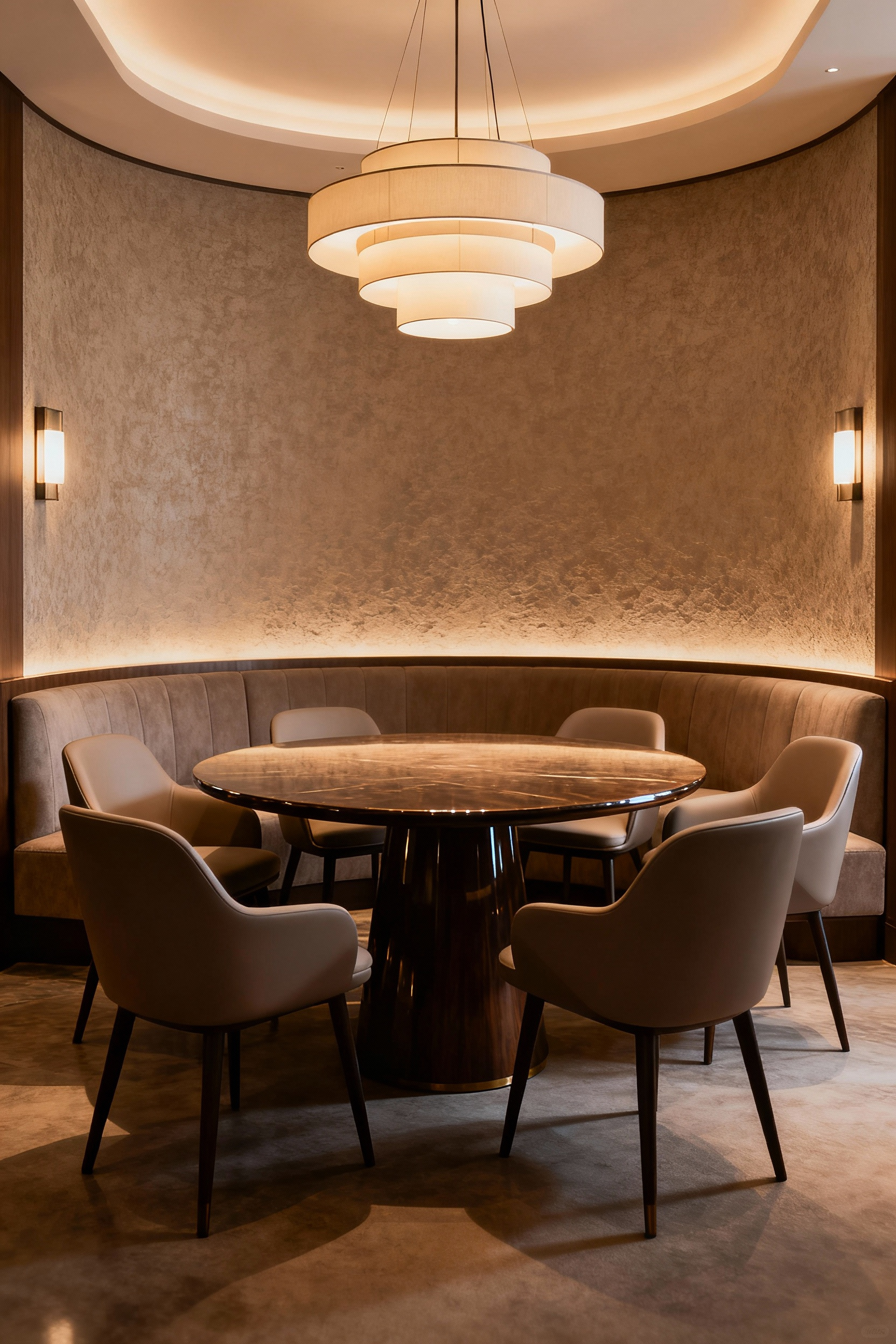
Flexible seating is key. I like to keep a few extra, stylish folding chairs stored away. And watch the sightlines—don’t put a massive centerpiece in the middle that forces guests to play peek-a-boo to talk to the person across from them.
Advanced Applications: Orchestrating Experiential Narratives (Part 2)
This is where we get personal. We are moving from “design rules” to “your story.”
10. The Vignette as Micro-Narrative: Styling Sideboards and Consoles as Evocative Storyboards
Think of your sideboard or console as a stage for little stories, or “vignettes.” It’s not just a place to dump keys. It’s a place to display a stack of vintage cookbooks, a weird piece of pottery you found in Mexico, and a beautiful lamp.
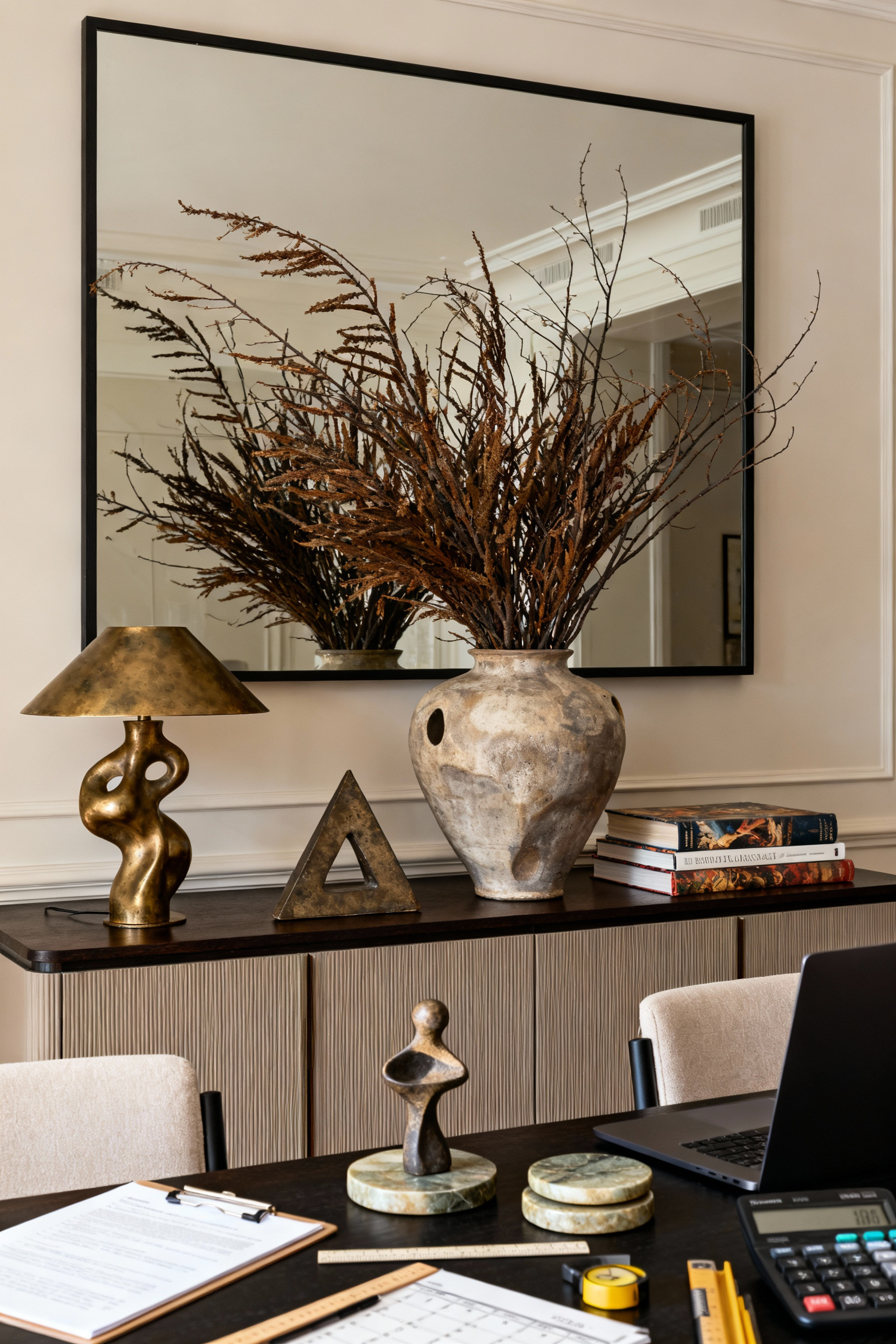
Nancy’s Insight: In my house, the sideboard has to work for a living. I style it with beautiful objects, but during a party, I clear a designated zone for dessert service or a coffee station. The best vignettes are beautiful and functional—leave space for the water pitcher!
11. Elevating Tabletopscapes: From Functional Necessity to Artistic Statement and Personal Expression
The tabletop is your canvas. You don’t need to match everything. In fact, I prefer it when you don’t. Mixing grandma’s floral china with modern matte-black flatware looks sophisticated and intentional.
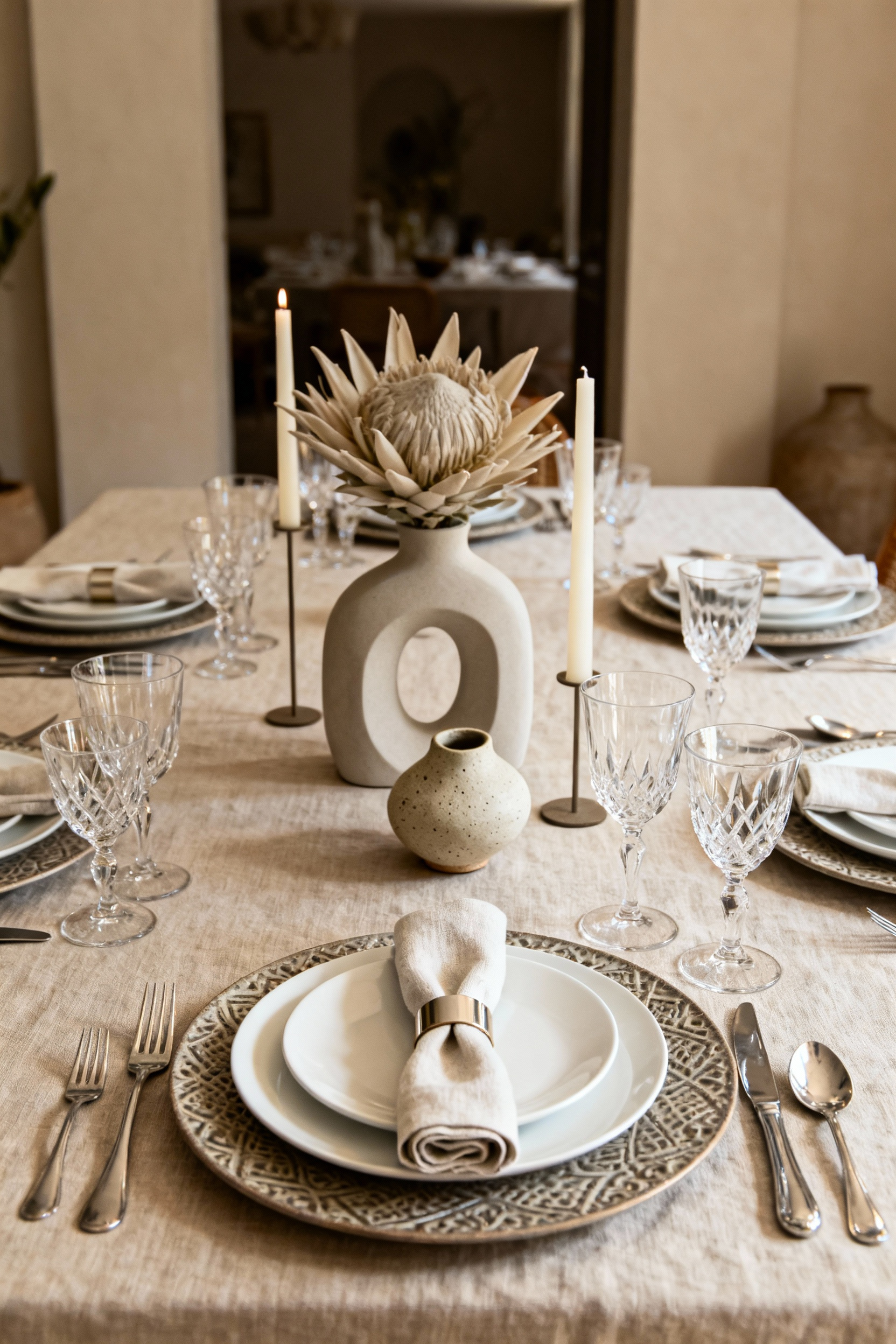
Layering is the secret. Start with a charger, then the dinner plate, then a salad plate. Use a linen napkin to add softness. And for the centerpiece? Keep it low. A runner of eucalyptus or small clusters of votives creates magic without blocking the view.
12. Personalized Provenance: Infusing Spaces with Artefacts Bearing Personal and Collective History
“Provenance” is just a fancy word for “stuff with a history.” A dining room feels sterile if everything looks like it was bought from a catalogue on the same day. You need soul.
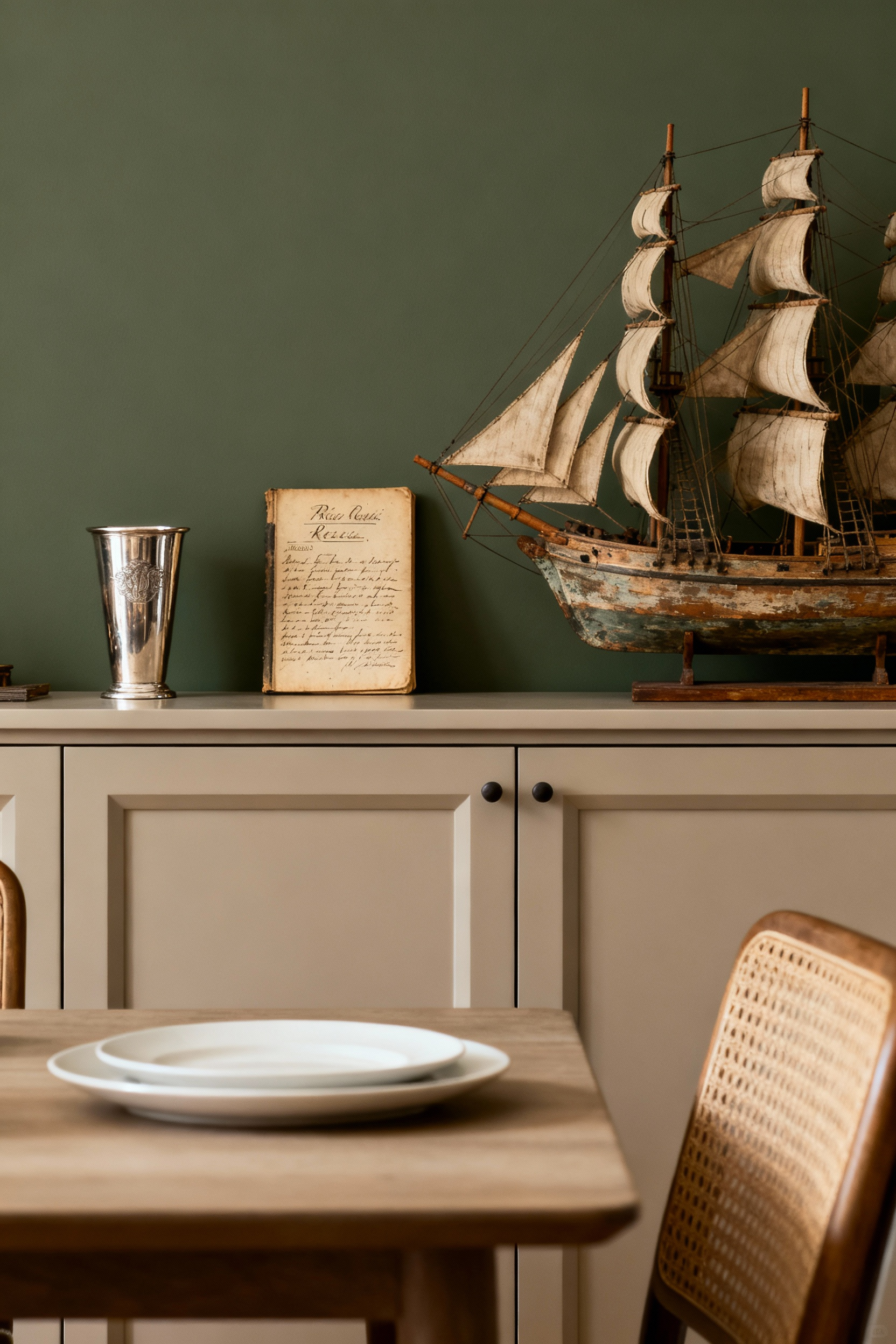
Display the tureen you inherited, even if it’s chipped. Frame a menu from a memorable trip. These items are conversation starters. When a guest asks, “Where did you get that?” you have a story to tell, and suddenly the dinner isn’t just about food; it’s about connection.
Philosophical Context: The Gastronomic Pantheon and Emotional Resonance
Why do we do all this? It’s not just to impress the neighbors. It’s about how the room makes people feel.
13. The Psychology of Sustenance: Applying Color Theory’s Impact on Appetite and Social Mood
Color changes how we eat. It’s true. Warm colors like terracotta, deep reds, or ochre stimulate the appetite and conversation. That’s why so many old-school Italian restaurants use red walls. They want you to eat, drink, and be loud.
Nancy’s Insight: If you want a calm, slow morning coffee vibe, go for sages or soft blues. But for a dining room meant for dinner parties, I often suggest going a bit bolder and darker. It creates a “cocoon” effect at night that feels incredibly cozy and intimate.
14. Cultivating Shared Intentionality: Designing for Connection, Reflection, and Commemoration
We need to design for “shared intentionality”—which is just a way of saying we want people to actually connect. The modern dining room is often the only place where we sit down without screens.

Comfortable chairs are the biggest factor here. If the chair hurts after 30 minutes, the “intentionality” breaks because people want to leave the table. I prioritize lumbar support and seat cushioning over aesthetics every single time. If they are comfortable, they will stay for dessert.
15. Embracing Wabi-Sabi Aesthetics: The Unrivaled Beauty in Imperfection and Transience
Wabi-Sabi is the Japanese concept of finding beauty in imperfection. In a dining room, this is liberating. It means the scratch on the table from your toddler’s fork isn’t “damage”—it’s a memory.
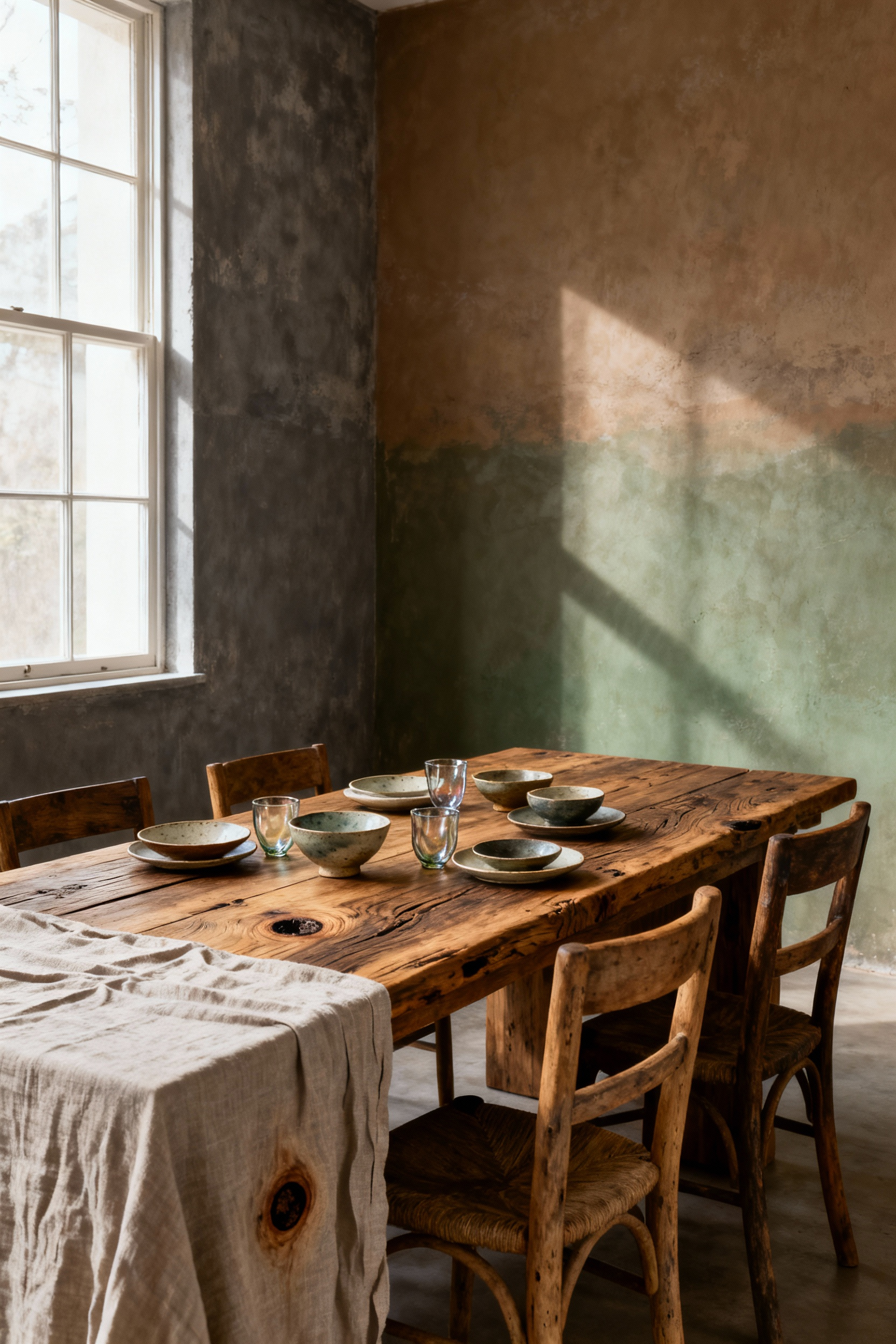
Choose materials that age well. Unlacquered brass that patinas, linen that wrinkles, wood that darkens. These things show that life happens here. A sterile, perfect room makes guests nervous to touch anything. A room with patina invites them to relax.
16. The Timeless Allure of Classicism: Synthesizing Heritage Grandeur with Modernist Nuance
You can mix the old and the new. In fact, you should. Classicism brings proportion and grandeur (think crown molding or a heavy wood table), while Modernism brings clean lines and airiness.
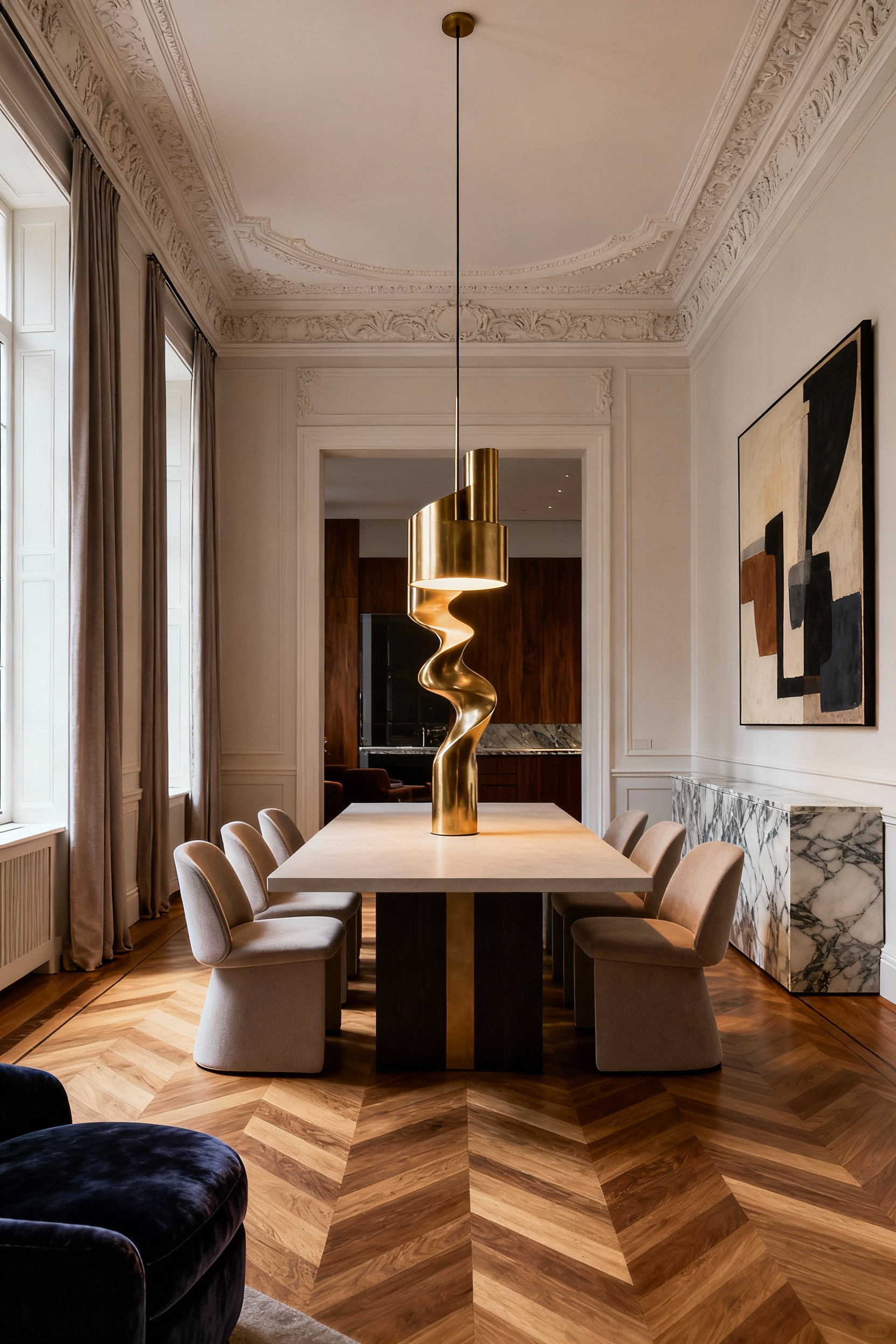
Nancy’s Insight: My favorite look is a traditional, heavy farmhouse table paired with sleek, modern chairs. The contrast makes the table look more grounded and the chairs look more sculptural. It stops the room from looking like a period drama set.
Curated Exemplars of Cultivated Dining: Case Studies in Aesthetical Execution
Let’s get down to brass tacks. How do we fix problems and make the room work for your life?
17. Diagnosing Aesthetical Anomie: Identifying and Rectifying Common Design Discordances
Sometimes a room just feels “off,” and you don’t know why. Usually, it’s a scale issue. The rug is too small, the light is too high, or the art is hung too low.
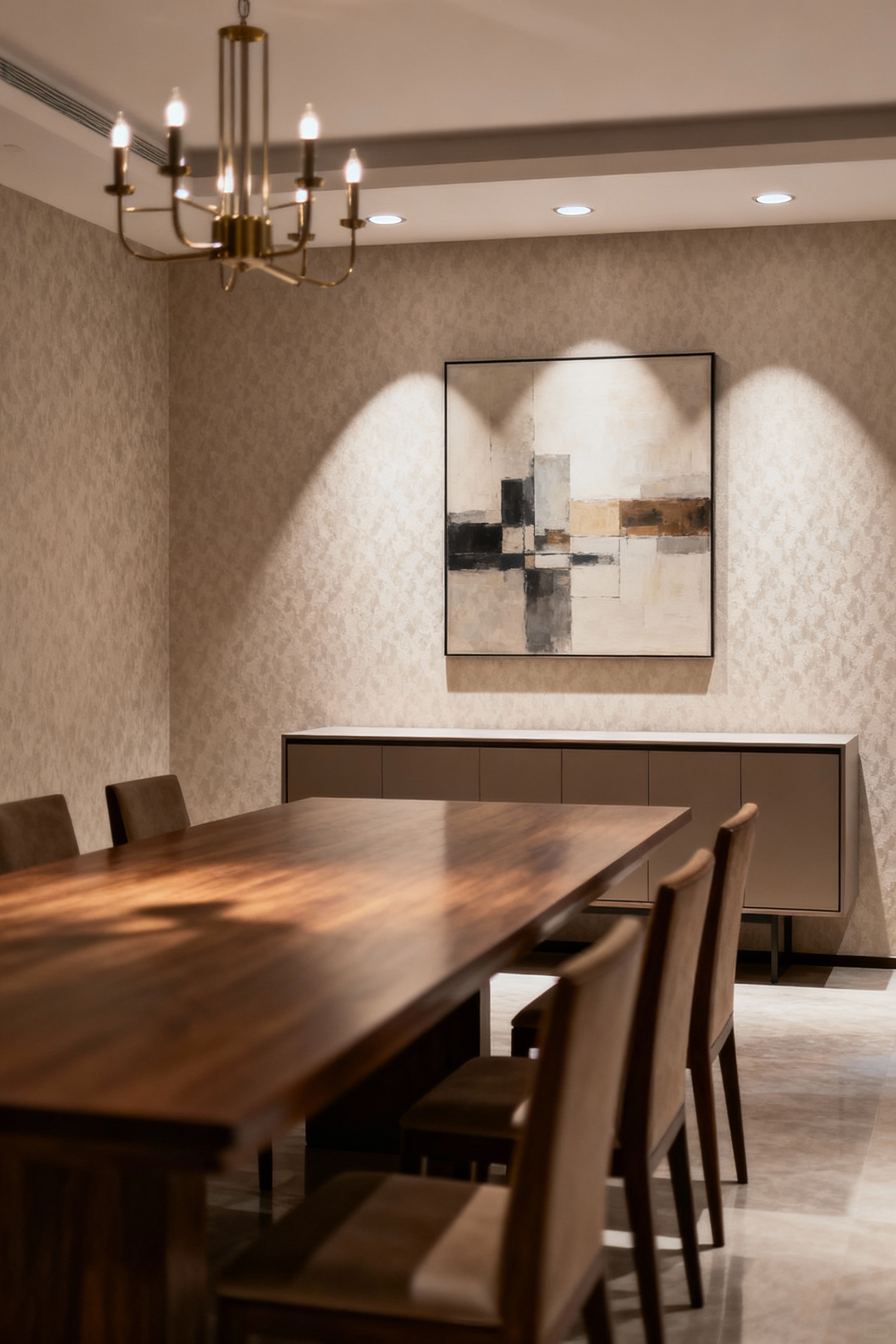
Nancy’s Insight: To fix this, I do a “chair test.” I sit in every single chair in the dining room. What do I see? Am I staring at a blank wall? Is the light blinding me? Is the buffet too close to my elbow? Design from the seated perspective, not just from the doorway.
18. Bespoke Banqueting: Tailoring Design Paradigms to Unique Culinary Practices and Entertaining Styles
Your design should match how you actually cook. If you love serving “family style” with big platters in the middle of the table, you need a wider table. A narrow table will leave no room for the food once the place settings are down.

If you prefer plating in the kitchen and bringing out finished dishes, you can get away with a narrower table, but you might need a sideboard near the kitchen door for staging the next course. Design for your workflow, not a magazine spread.
19. The Transitory Feast: Designing for Adaptable Grandeur Across Diverse Occasional Gatherings
Most of us don’t have a ballroom. We have one table that needs to be an office, a homework station, and a Thanksgiving venue. Versatility is key.
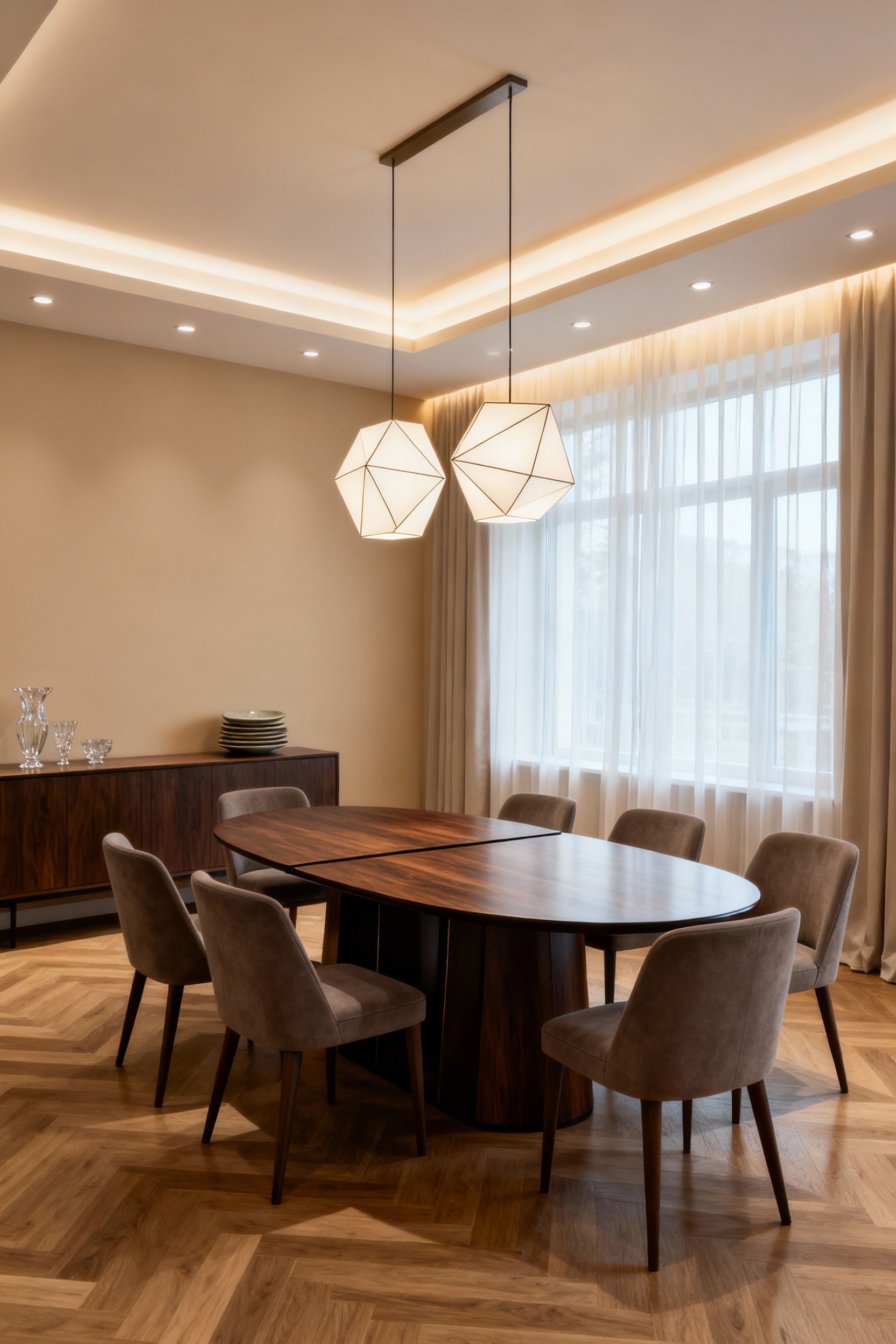
Invest in a table with high-quality leaves or extensions. But more importantly, plan where those leaves go when you aren’t using them! I also love “host chairs” (the ones at the heads of the table) that can be pulled into the living room when you have a crowd.
20. Sustaining the Sanctuary: Integrating Maintenance Protocols with Enduring Beauty and Functionality
Finally, let’s talk about maintenance. A beautiful room that is a nightmare to clean won’t stay beautiful for long. It will just stress you out.
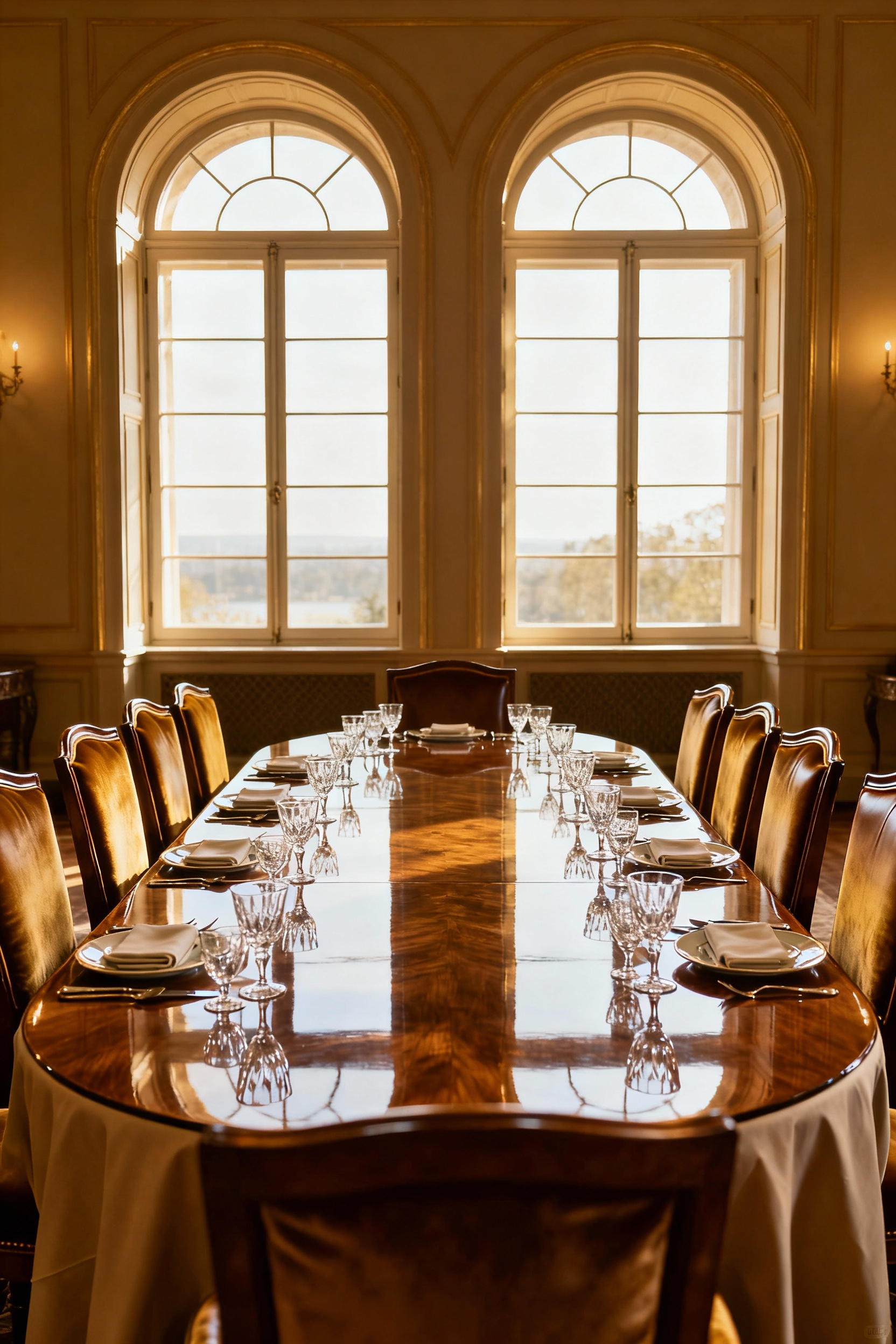
Nancy’s Insight: Practicality is the ultimate luxury. Use semi-gloss or eggshell paint on the walls so you can wipe off splash marks. Seal your stone. Have a “triage kit” in the sideboard—a Tide pen, a lint roller, and a cloth for spills. If you aren’t worried about the mess, you’ll enjoy the party so much more.
Conclusion
We’ve covered a lot of ground here, from the height of your chandelier to the psychology of your wall color. But here is the takeaway: these 20 stratagems are just tools. The goal isn’t to follow every rule perfectly; it’s to create a dining room aesthetic that supports the way you want to live and entertain.
In my years of blending kitchen design with interior styling, I’ve learned that the best rooms are the ones that feel lived-in and loved. They are spaces where the lighting makes everyone look good, the chairs let you linger over coffee for hours, and the flow of the room makes serving a meal feel like a dance rather than a chore.
So, take these ideas and play with them. Move your rug, dim the lights, maybe mix up your china. Create a space that doesn’t just look good in a photo, but feels good when you’re sitting there, wine in hand, surrounded by the people you love. That is true effortless elegance.
